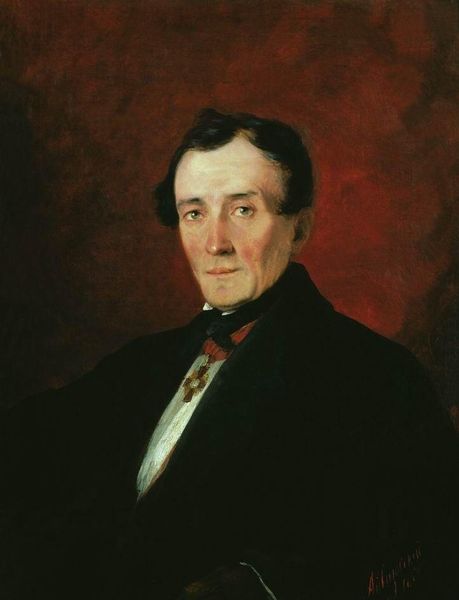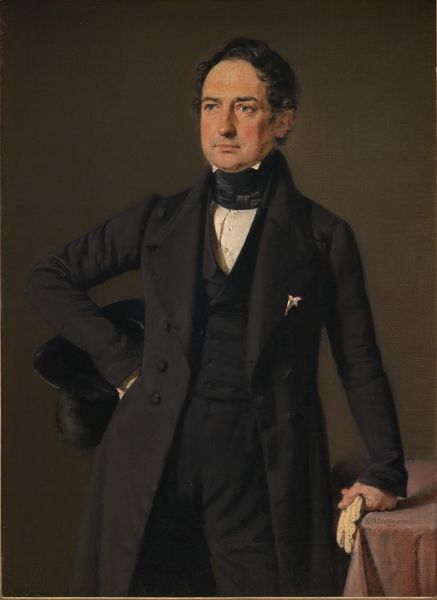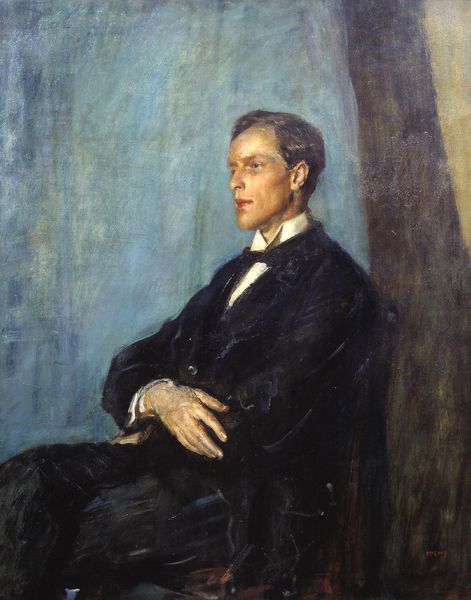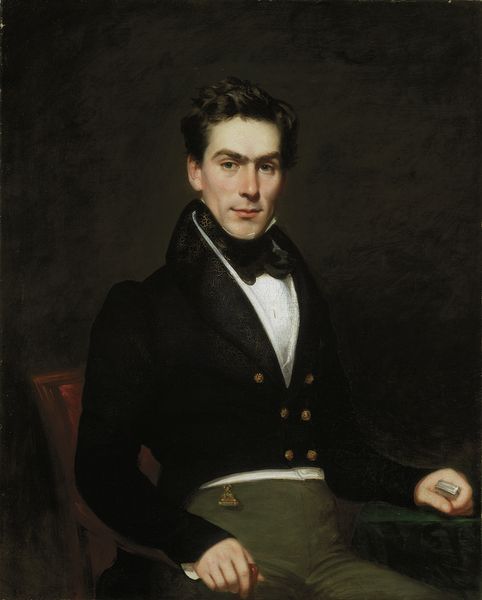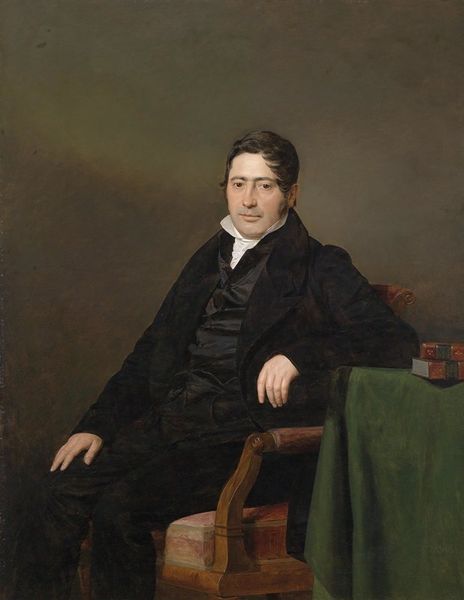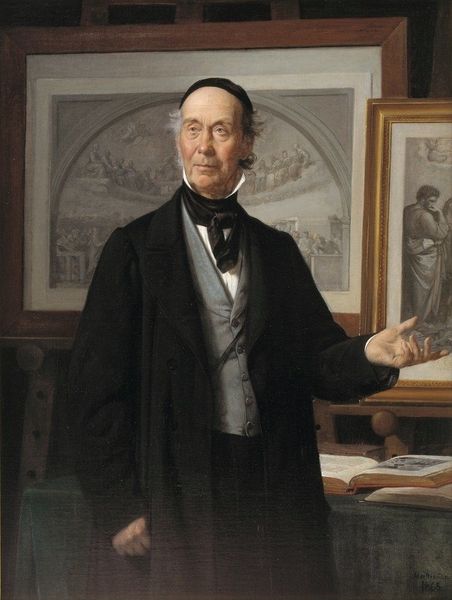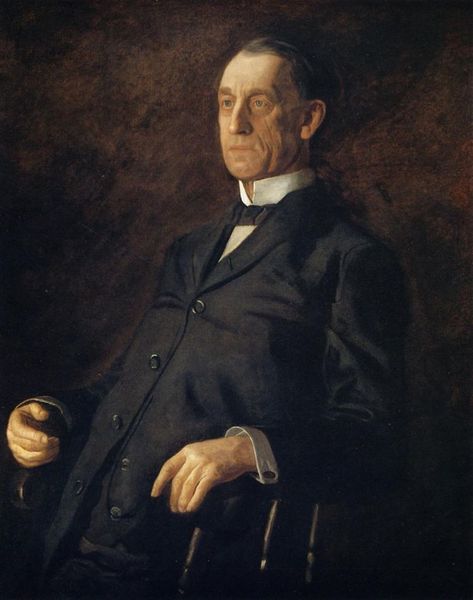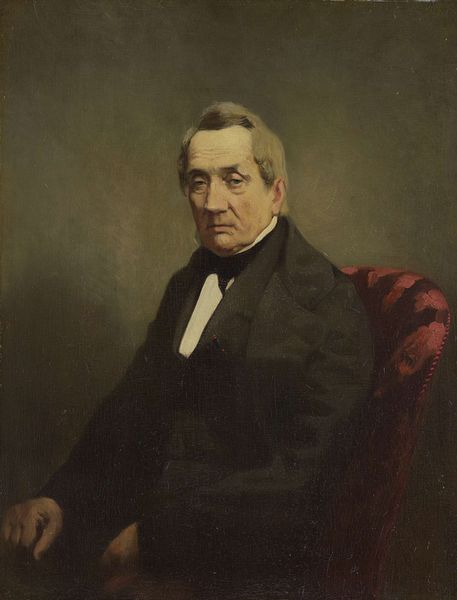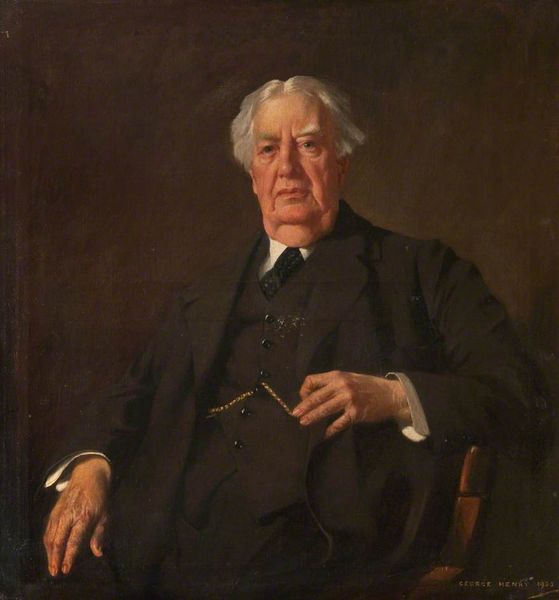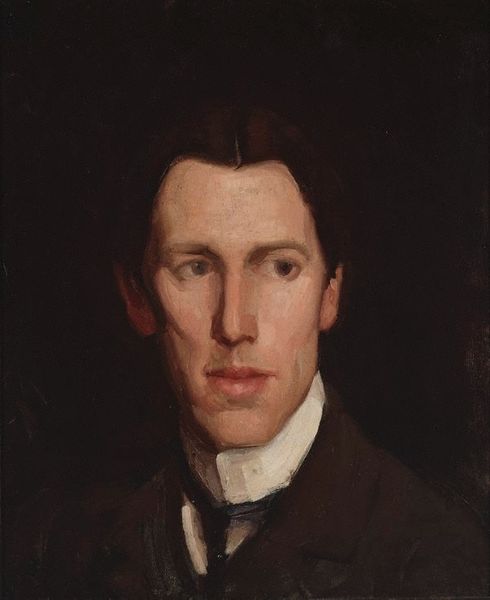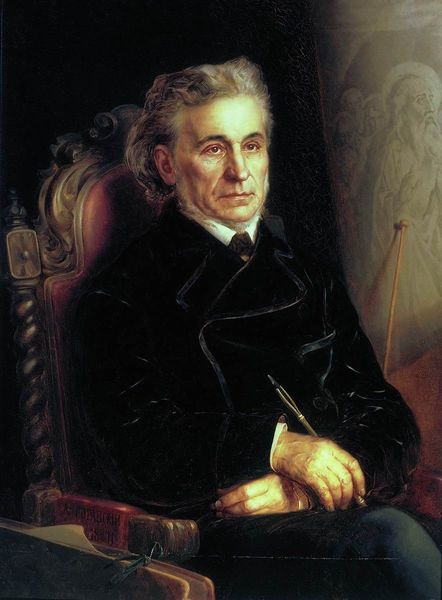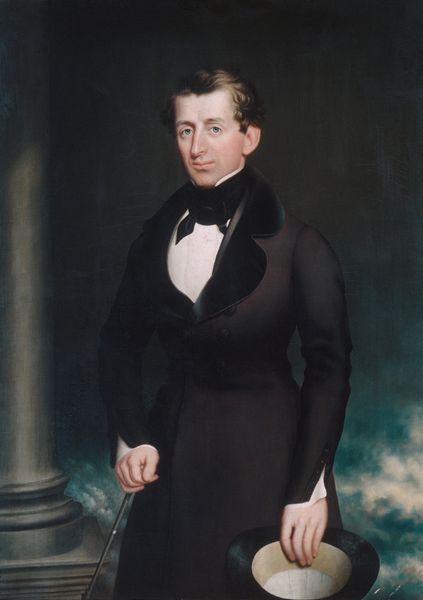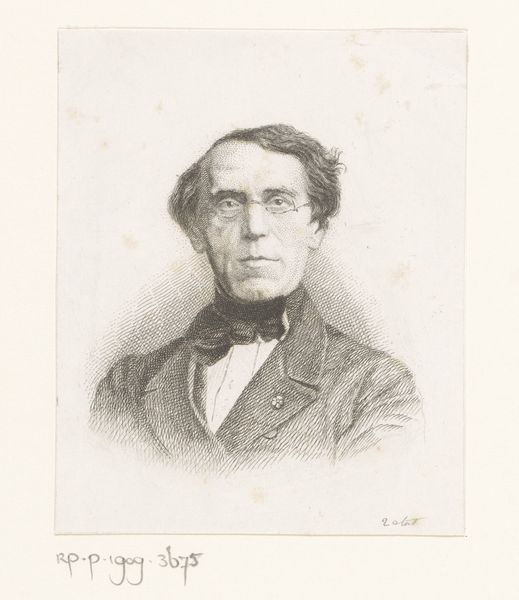
Copyright: Public domain
Editor: This is "Portrait of S.Hudenkov," an oil painting made around 1890 by Konstantin Makovsky. He looks distinguished, holding a book or album. What strikes me is his rather intense gaze; I wonder what it signifies. How do you interpret this work? Curator: Indeed, his gaze is quite piercing. Consider how portraits of this era often functioned. More than mere likenesses, they were laden with symbolism reflecting status and aspiration. That book he holds becomes an emblem of intellect, a suggestion of cultural capital. Note also his refined attire, each element contributes to the sitter's constructed identity. Does anything about the backdrop strike you? Editor: It looks kind of murky... a vague, green curtain? It's certainly not as sharply defined as his face. Curator: Precisely! It invites a reading. Instead of a concrete setting, we see a swirling abstraction, mirroring the psychological space of the sitter, not a mimetic reality. This speaks to the Romantics’ interest in the individual’s interiority and their feelings, placing an emphasis on conveying the *impression* of a person over straightforward representation. How do we then reconcile this with elements of Realism? Editor: Ah, I see your point! So it's this interplay of representing external appearance versus internal character or spirit. Curator: Yes! This image doesn’t simply show us *who* S.Hudenkov was but *suggests* something about his intellect, position, and the mood of the era through culturally understood visual language. Considering all these symbolic features truly enriches my understanding of 19th-century Russian portraiture. Editor: I agree, it adds another dimension to seeing portraits.
Comments
No comments
Be the first to comment and join the conversation on the ultimate creative platform.
